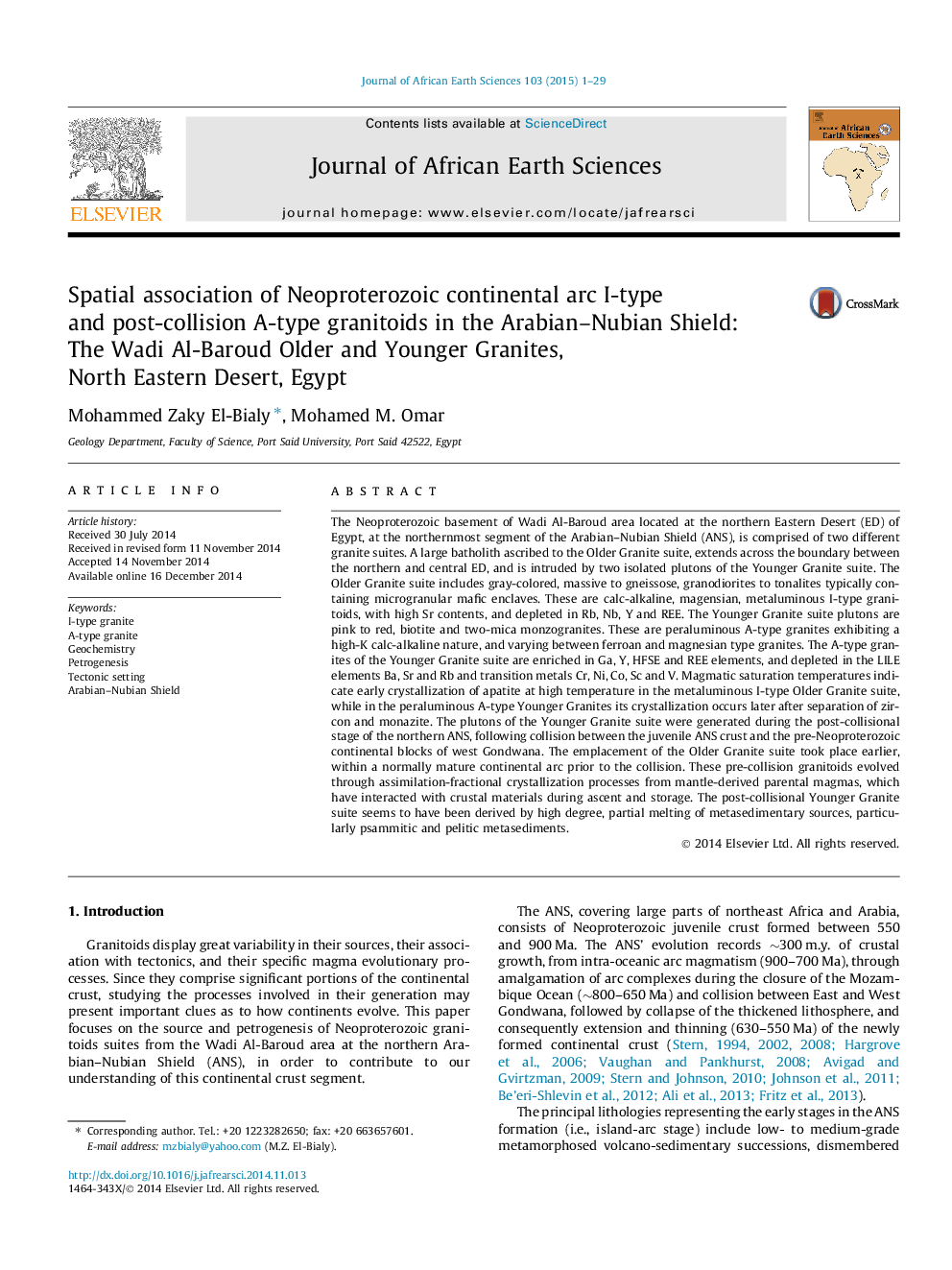| کد مقاله | کد نشریه | سال انتشار | مقاله انگلیسی | نسخه تمام متن |
|---|---|---|---|---|
| 4728691 | 1640204 | 2015 | 29 صفحه PDF | دانلود رایگان |

• Older Granites are calc-alkaline, magensian, metaluminous I-type granitoids.
• Younger Granites are high-K calc-alkaline, ferroan to magnesian, peraluminous A-type.
• The I- and A-type granites are continental arc and post-collisional, respectively.
• I-type granites evolved from interaction of mantle-derived magma and crustal material.
• Peraluminous A-type granites derived by crustal anatexis of metasedimentary source.
The Neoproterozoic basement of Wadi Al-Baroud area located at the northern Eastern Desert (ED) of Egypt, at the northernmost segment of the Arabian–Nubian Shield (ANS), is comprised of two different granite suites. A large batholith ascribed to the Older Granite suite, extends across the boundary between the northern and central ED, and is intruded by two isolated plutons of the Younger Granite suite. The Older Granite suite includes gray-colored, massive to gneissose, granodiorites to tonalites typically containing microgranular mafic enclaves. These are calc-alkaline, magensian, metaluminous I-type granitoids, with high Sr contents, and depleted in Rb, Nb, Y and REE. The Younger Granite suite plutons are pink to red, biotite and two-mica monzogranites. These are peraluminous A-type granites exhibiting a high-K calc-alkaline nature, and varying between ferroan and magnesian type granites. The A-type granites of the Younger Granite suite are enriched in Ga, Y, HFSE and REE elements, and depleted in the LILE elements Ba, Sr and Rb and transition metals Cr, Ni, Co, Sc and V. Magmatic saturation temperatures indicate early crystallization of apatite at high temperature in the metaluminous I-type Older Granite suite, while in the peraluminous A-type Younger Granites its crystallization occurs later after separation of zircon and monazite. The plutons of the Younger Granite suite were generated during the post-collisional stage of the northern ANS, following collision between the juvenile ANS crust and the pre-Neoproterozoic continental blocks of west Gondwana. The emplacement of the Older Granite suite took place earlier, within a normally mature continental arc prior to the collision. These pre-collision granitoids evolved through assimilation-fractional crystallization processes from mantle-derived parental magmas, which have interacted with crustal materials during ascent and storage. The post-collisional Younger Granite suite seems to have been derived by high degree, partial melting of metasedimentary sources, particularly psammitic and pelitic metasediments.
Journal: Journal of African Earth Sciences - Volume 103, March 2015, Pages 1–29